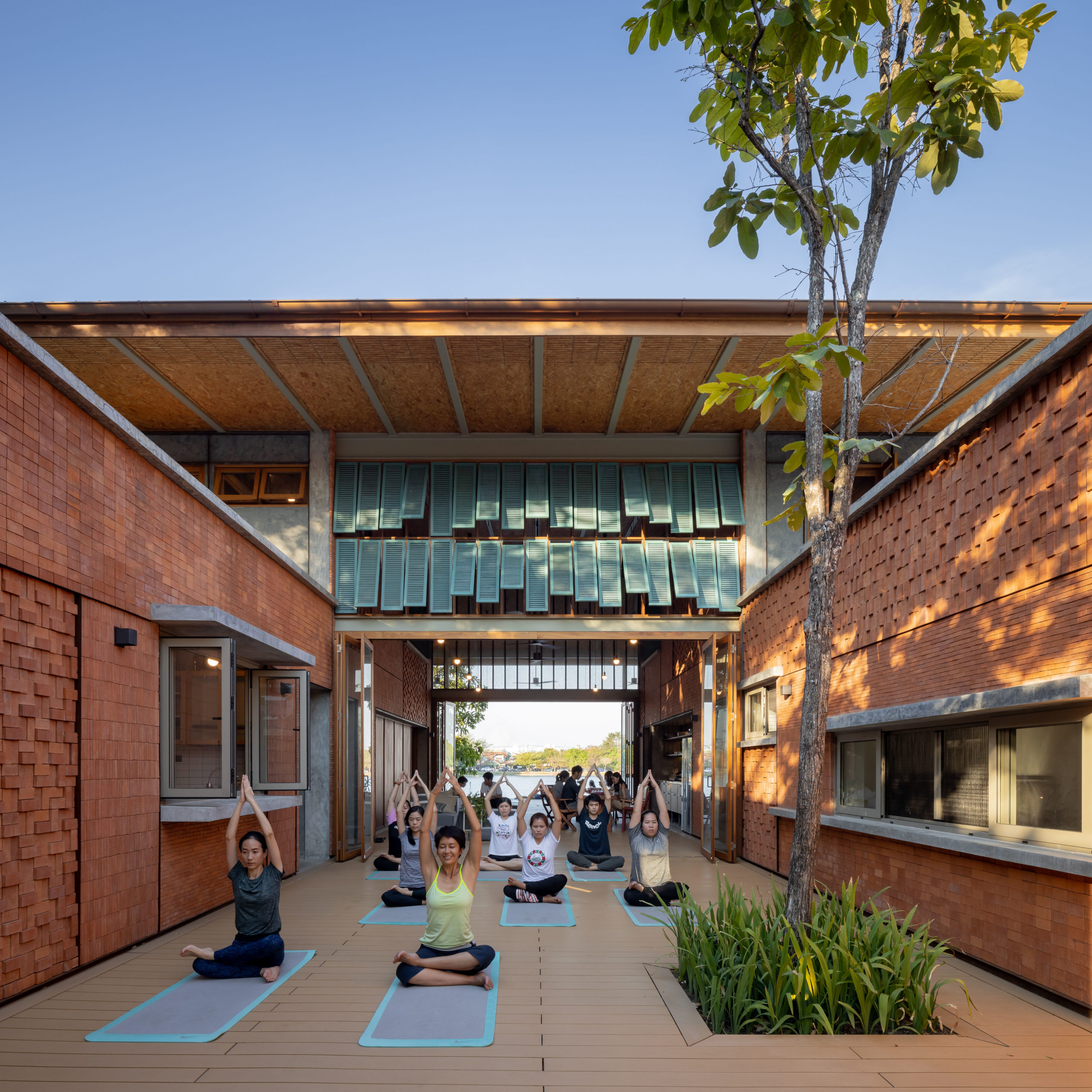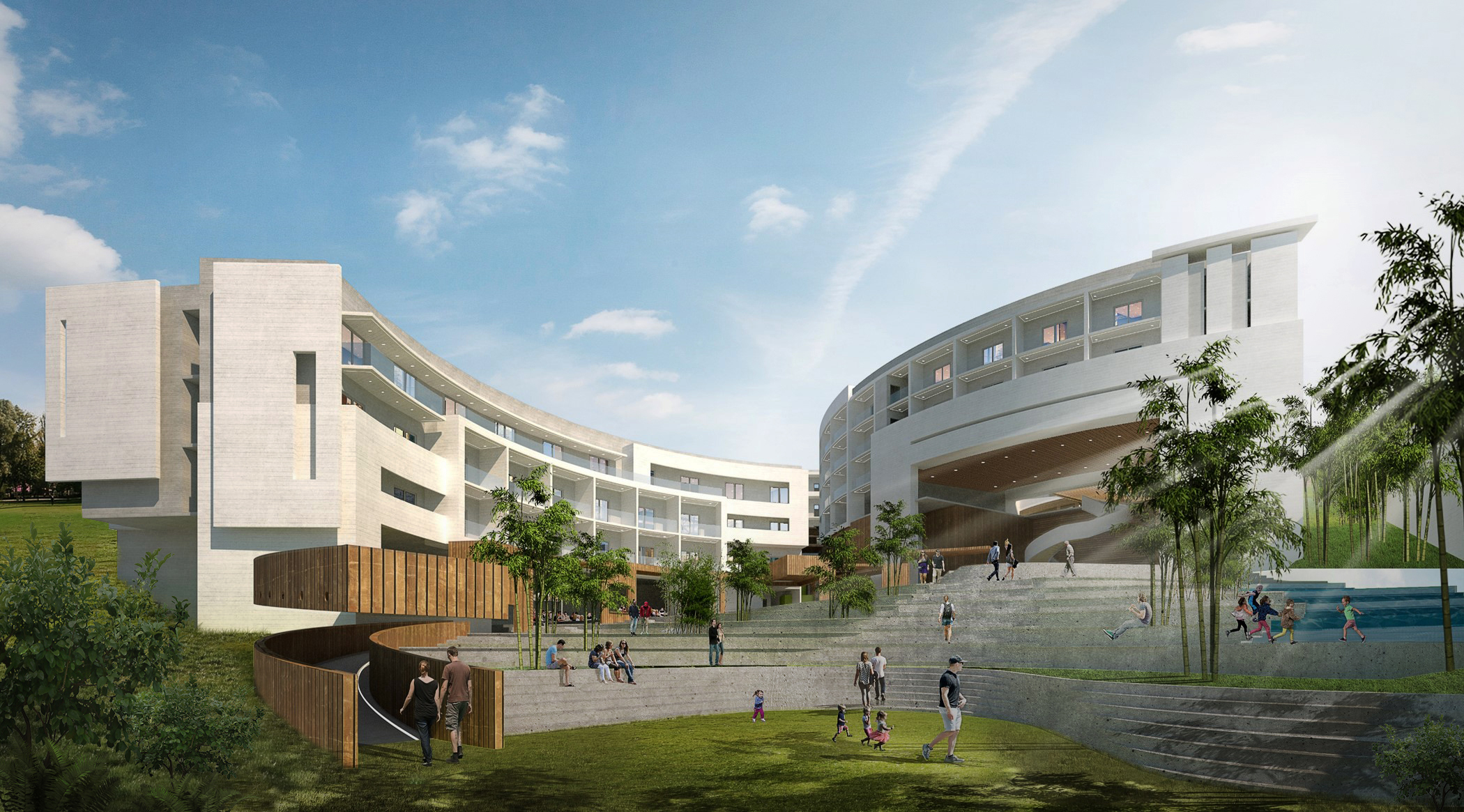Exploring ideas on sustainable tropical architecture
Recently, I’ve been thinking about the virtues of our tropical climate and how it might allow us to better deal with the pandemic, which has us all locked down once again in our homes.
It certainly helps that we have not been faced with too much rain so far this wet season, and that we do not have a winter season to face come December. Perhaps there are more ways we can embrace our climate and figure out a more sustainable lifestyle as we move forward.
Last Tuesday, while standing around my terribly wasted 20-meter long office balcony, I was trying to figure out how we could have our studio opened up to have fresh air blowing through instead of airconditioning. We certainly had that opportunity with huge trees on two sides of the office, wide eaves and wraparound balconies, and a creek behind to cool the surroundings.
We could have had an outdoor terrace pantry and with high enough ceilings, we could have had a well ventilated and passively cooled workspace. Alas, as with most spaces, our studio also fell victim to corporate reliability and an entrenched hesitance to embrace something different. So now, we are trying to recognize how to better adapt our spaces to the tropics and identify the obstacles to a more sustainable and local architectural understanding.
Tropical architecture predominantly has this imagery of wood as a primary material component. Certainly, the romance of a local architecture of rich native materials has always captured our imagination, just consider the desirability of narra planks for our homes. Yet if we are to truly pursue an architecture that can be sustainable for the tropics, the predominance of slow-growing hardwoods and the lack of native fast-growing softwoods preclude us from considering wood as a primary building material. Tropical architecture is not—or at least should not be—built in timber. Our rainforests are too valuable and our trees are our treasure.
We must revisit our ideas on sustainable tropical architecture. Vernacular architecture should not embrace predetermined tradition or self-reinforcing perceptions as a starting point. We should instead look into climate and lifestyle to define the development of a more sustainable local architecture.
Tropical built geometry
“Roofs in tropical countries should do two things, shelter from rain and provide a comfortable microclimate.” Florian Heinzelmann of SHAU Architects explores roof geometry that allows for greater volumes and cross ventilation. Imagine all the houses with ceilings that cover up roof structures that could serve to better cool our homes. Most of them simply serve to hide avoidable wirings and beams that could even serve to better articulate our rooms.
Tropical architecture should have one overarching goal, the increased movement of air to disperse heat and increase evaporation in our hot and humid climate. Expansive windows shaded by wide overhangs require broader building setbacks instead of the minimums that our building codes require. These would have the added benefit of bigger gardens that can lessen heat gain and provide space for trees that can provide additional shade for the building.
Tropical architecture is determined by lifestyle and culture. We live the way we do simply because most media tend to portray idyllic architecture based on northern temperate climates. Our appreciation for modernity does not extend towards experimentation and progress but rather the glitzy forms and typologies of major urban centers. Wide avenues and glass encased skyscrapers dominate our visions of a modern city.

The Sala Areeya in Bangkok is a residence and yoga school by Chat Architects. Photo by Ketsiree Wongwan
Local lifestyles
Public perception and common sense are best shaped by experience. We must develop public buildings that better reflect our own culture. Chatpong Chuenrudeemol of CHAT Architects believes that “tropicality isn’t just an architectural typology, but a cultural DNA in all aspects of life.” Our sense of tropical architecture is determined not by the built form, but by the people who inhabit them. Public buildings can help develop new ideas on how we can shape our built environment to better suit our tropical environment. Filipinos like to put ice in their beer. We also like our ACs set to max and blasted into our rooms. These are analogous results of our perceptions of luxury and the good life.
The sun is always too hot, the inordinate fear of rain and general wariness of strangers serve as obstacles to a more engaging community. The fact is, we have a more regulated yearlong coastal tropical climate with lesser extremes that allow for a more studied and open typology. We have an opportunity to build architecture that can embrace nature without necessary insertions of artificial heat or cooling. Nowhere else would a more organic and unbounded lifestyle be more possible.

Kampung Admiralty in Singapore, which was designed by WOHA, is an integrated mixed-use retirement community project that unites a wealth of public facilities under one roof. Photo by Darren Soh
Systemic change
Tropical architecture cannot just be individual separate instances of our built typology. Wong Mun Summ of WOHA believes that form follows systems. He defines systems as “a set of things working together to form an interconnected network that makes a complex whole.” For us to be able to develop a more livable tropical built environment, we must develop systemic interventions that can improve our local climate and everyday life.
I used to walk around daily when I was growing up in downtown Manila. I remember the broken pavements and relatively much more pedestrian streets. What made them so was the fact that these narrow streets were pretty much shaded throughout most of the day. The various street courts and vendors slowed down traffic to pretty safe speeds. The occasional tree provided regular intervals of shade from the harsh sun.
A more progressive tropical architecture would allow for more walkable distances between homes and workplaces. It would have a cooler local climate with ample shade via both trees and arcade or canopies. People would traverse the streets and not have to climb up flights of stairs in the tropical heat to cross a road. Public amenities and services would be locally available and easily reachable. Buildings would be more porous and a light breeze a predetermined constant.
If we were to determine what it takes to develop our own distinct architecture, then we must look at our heritage and history. This heritage is not just the architecture and tradition of previous times, but the knowledge and spirit that stem from our lands and seas. It is the way of life that our people can embrace, a vision borne of a balance and a willingness to explore. We are people of the tropics—our heritage is not about the past, but a means to determine our own way forward.


